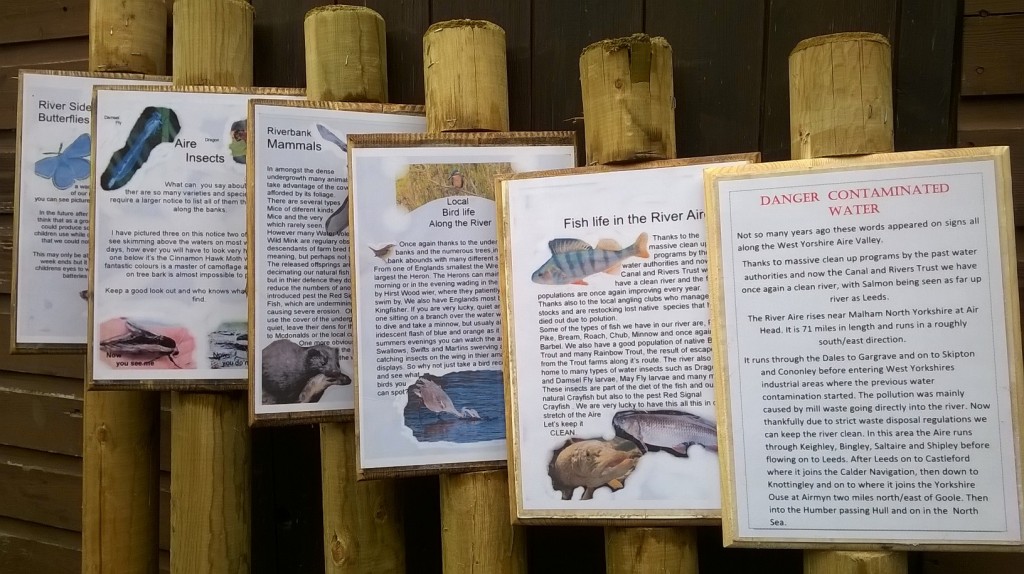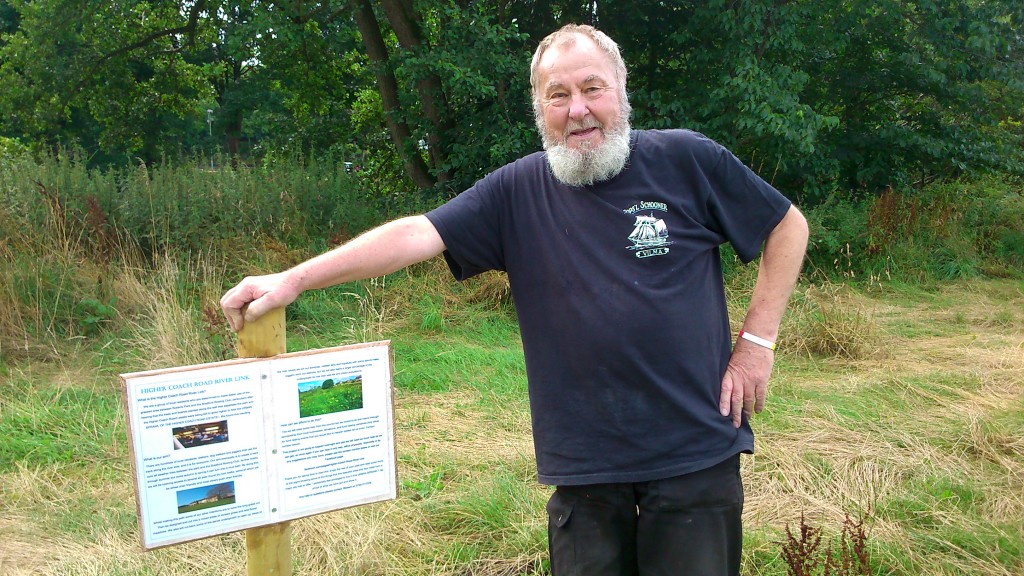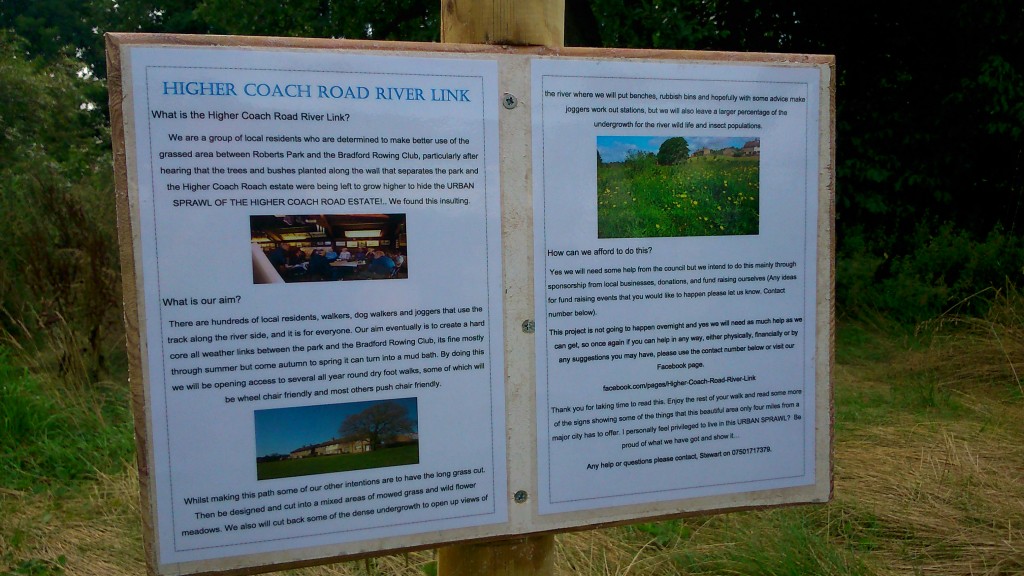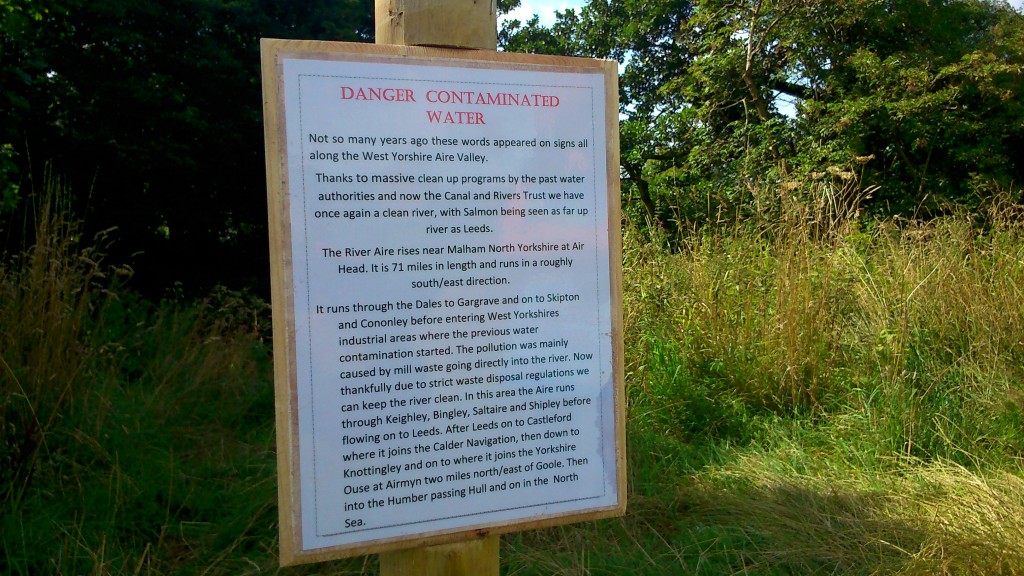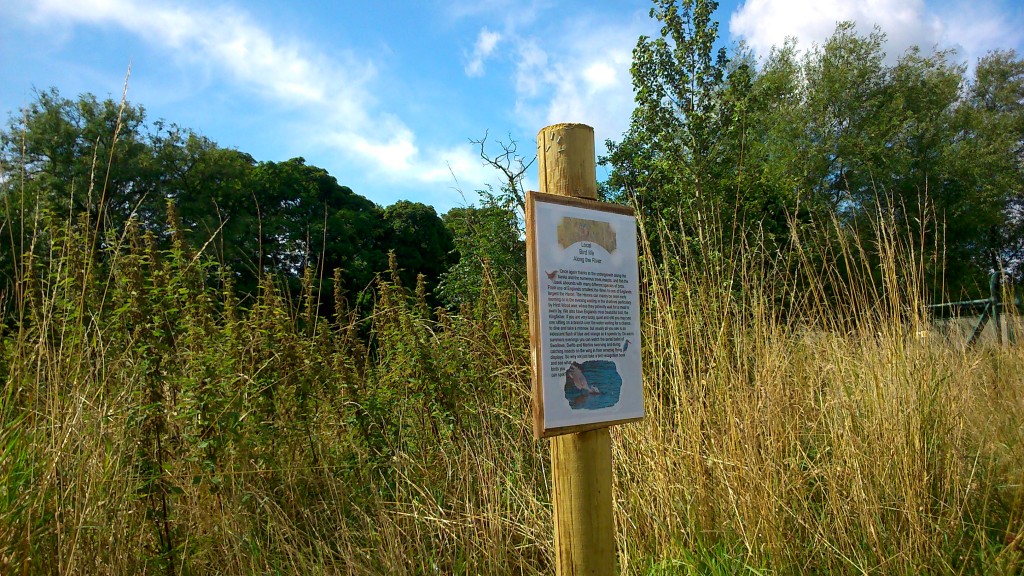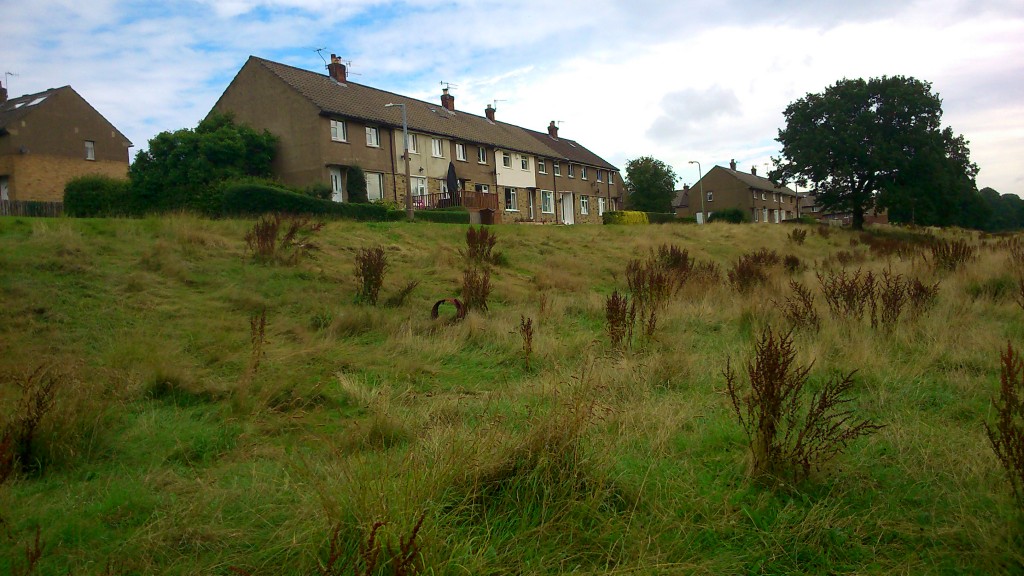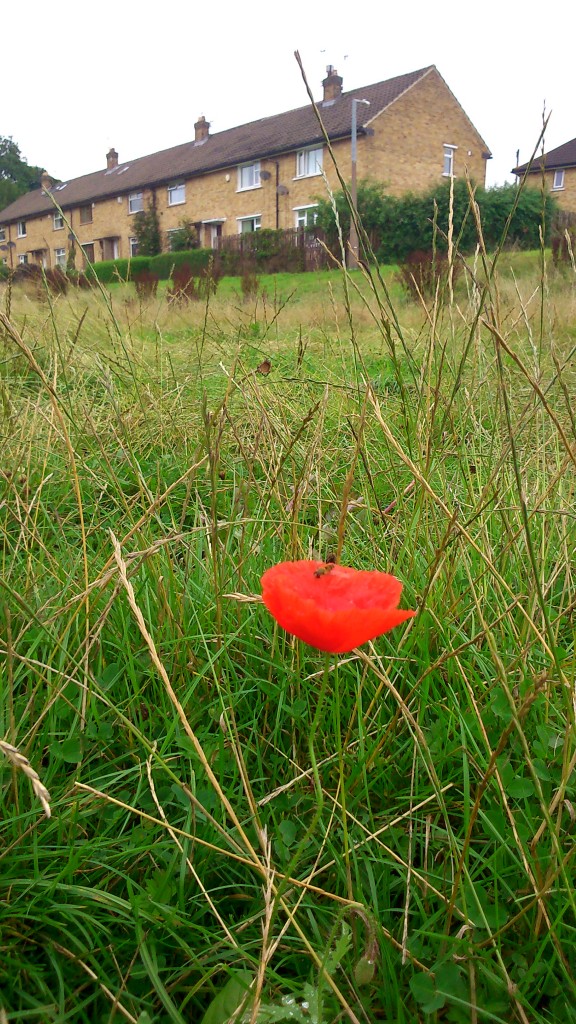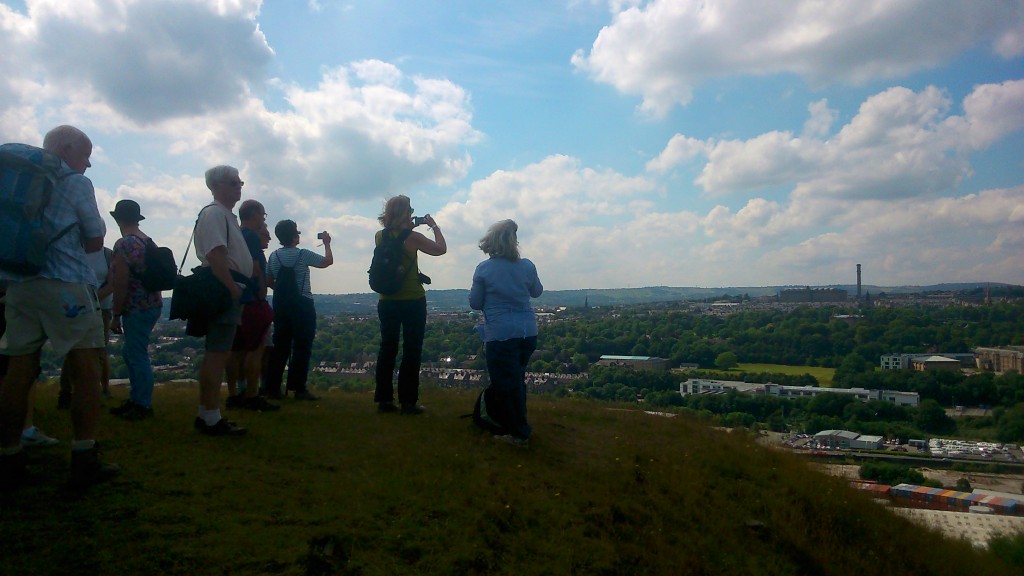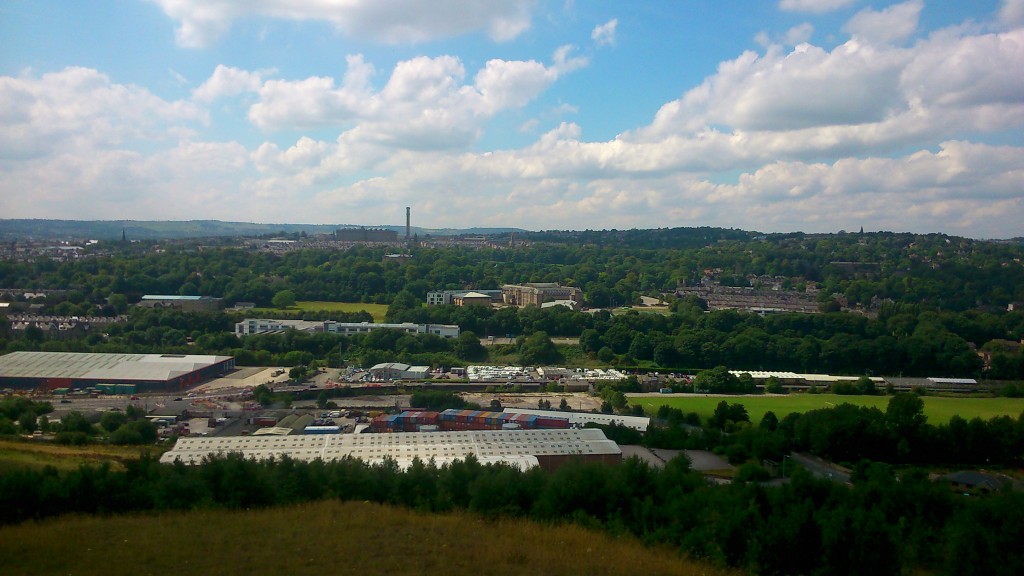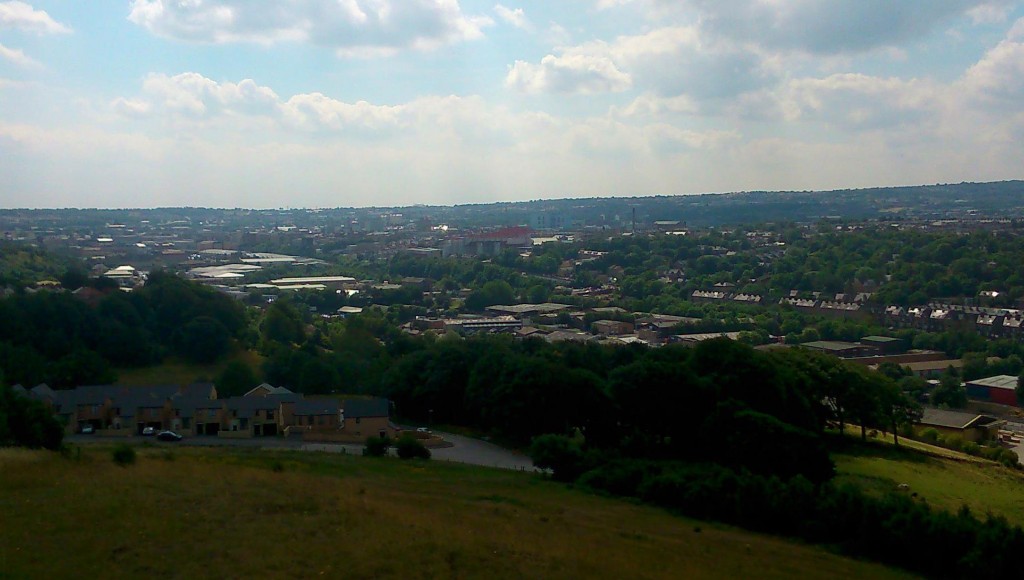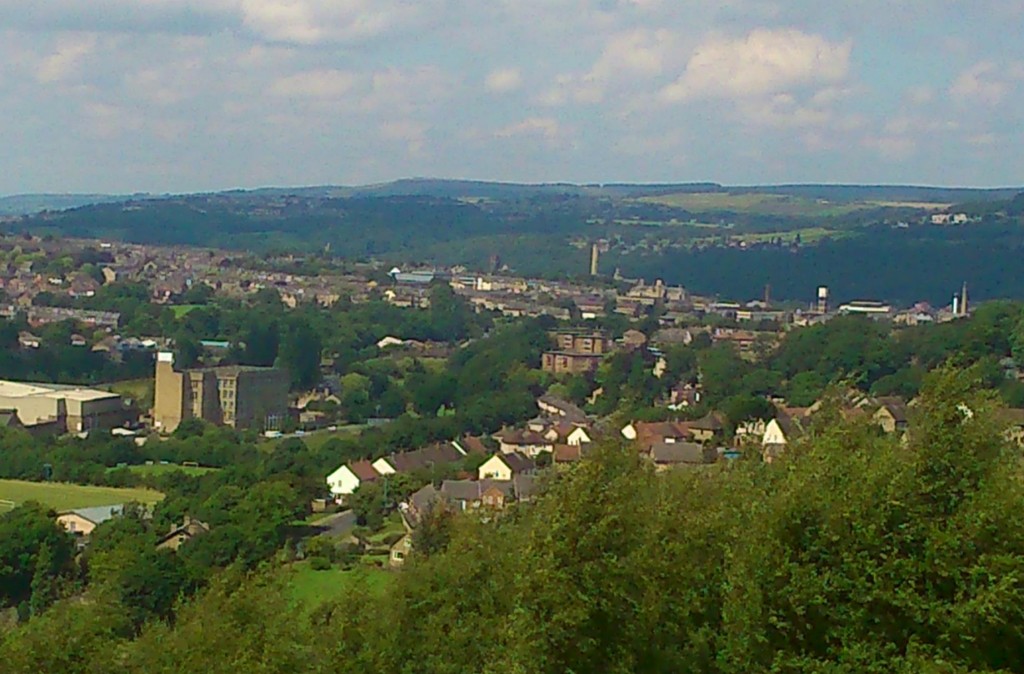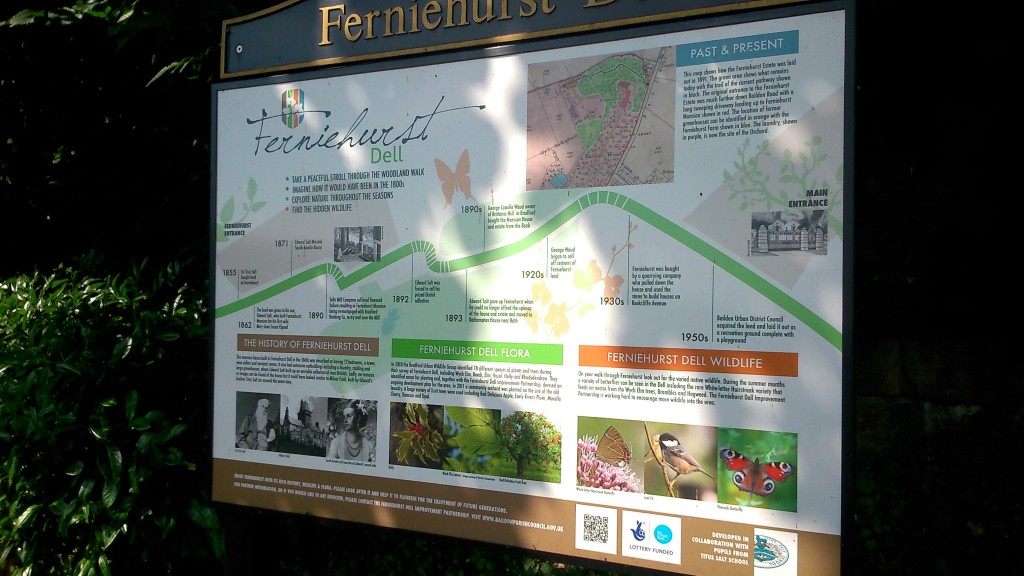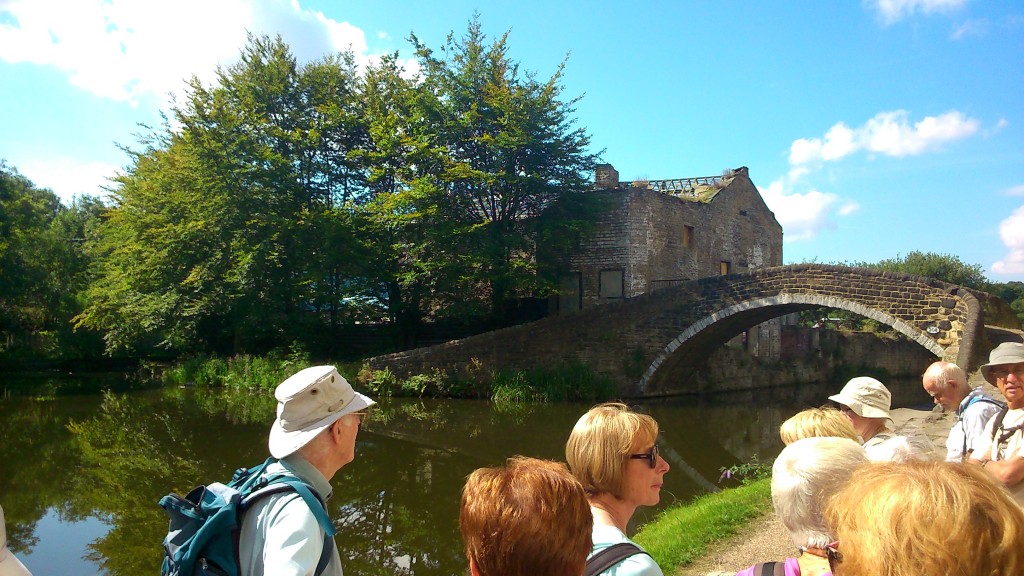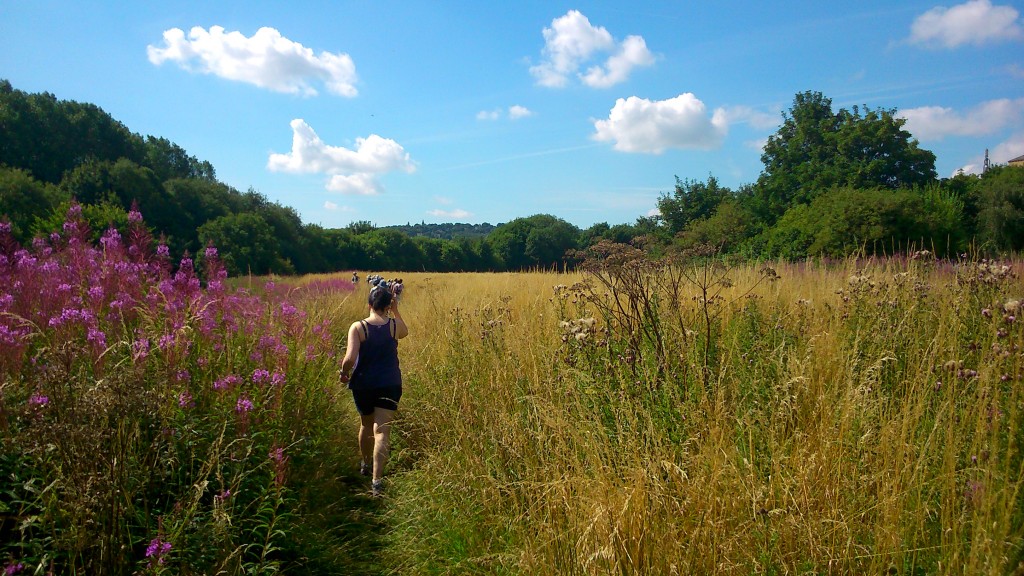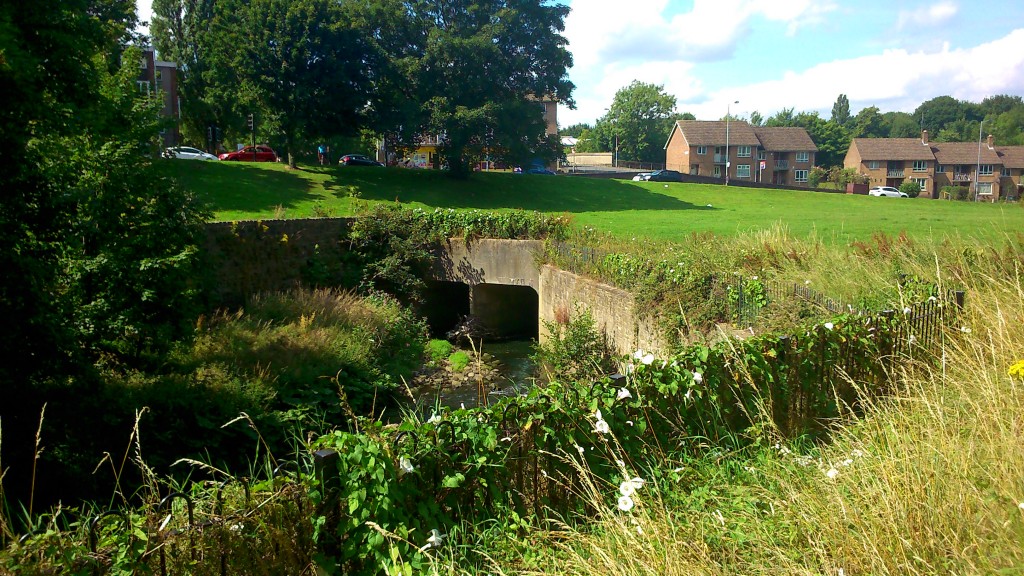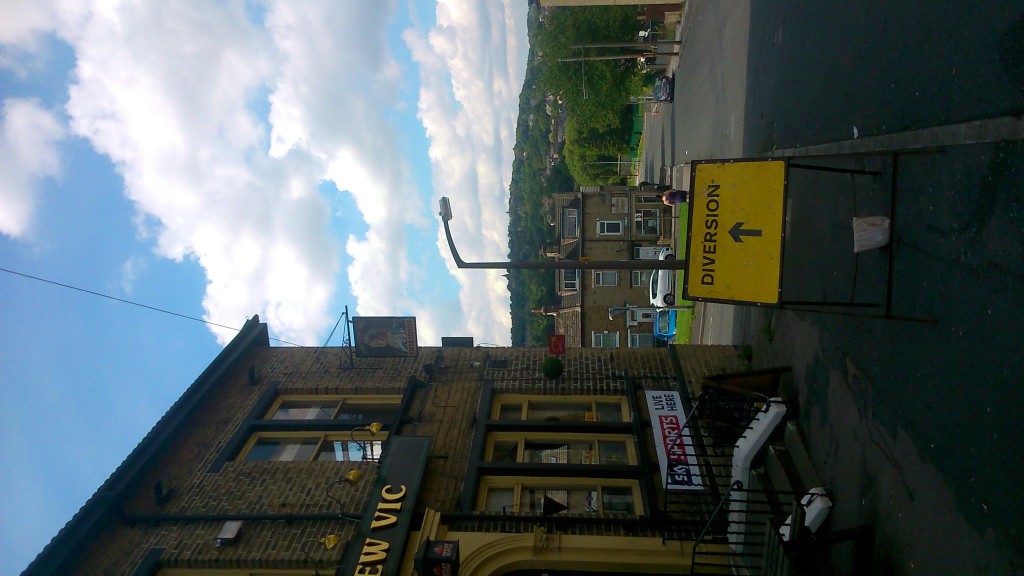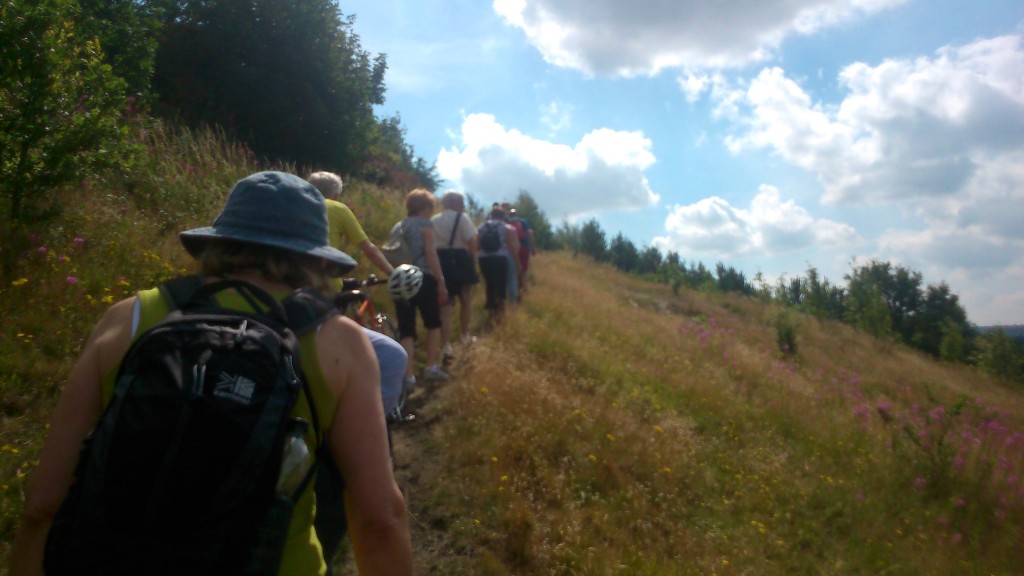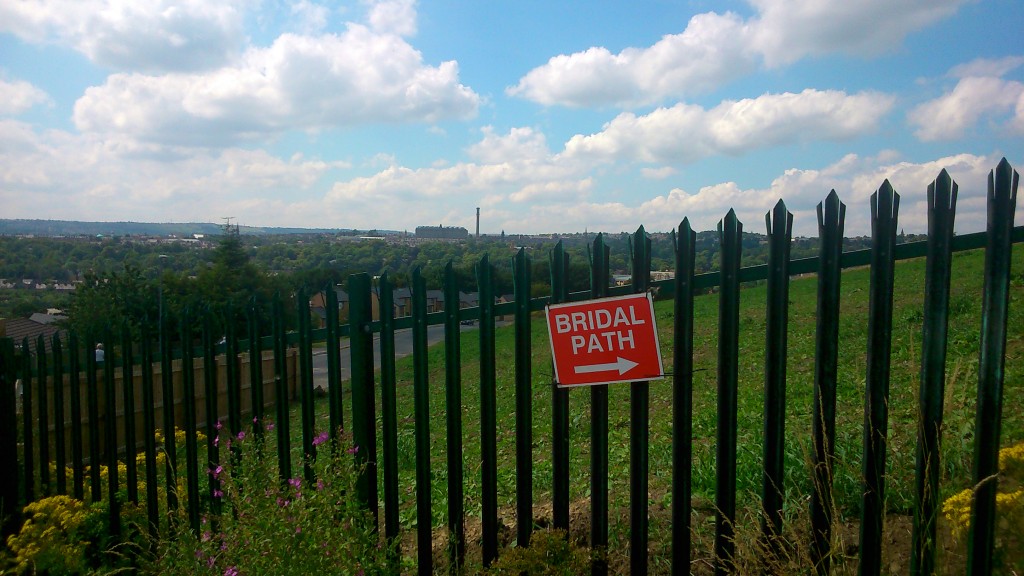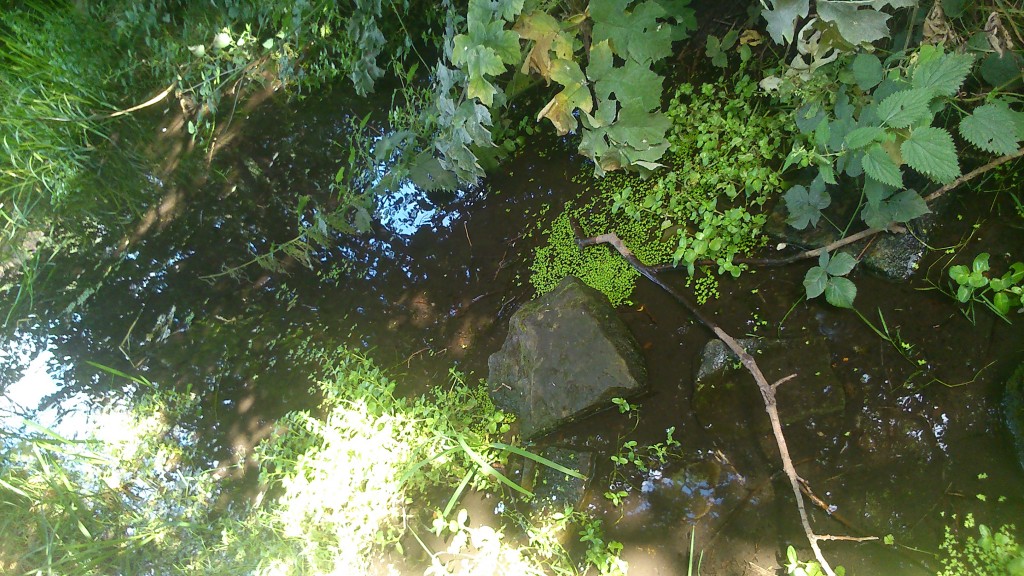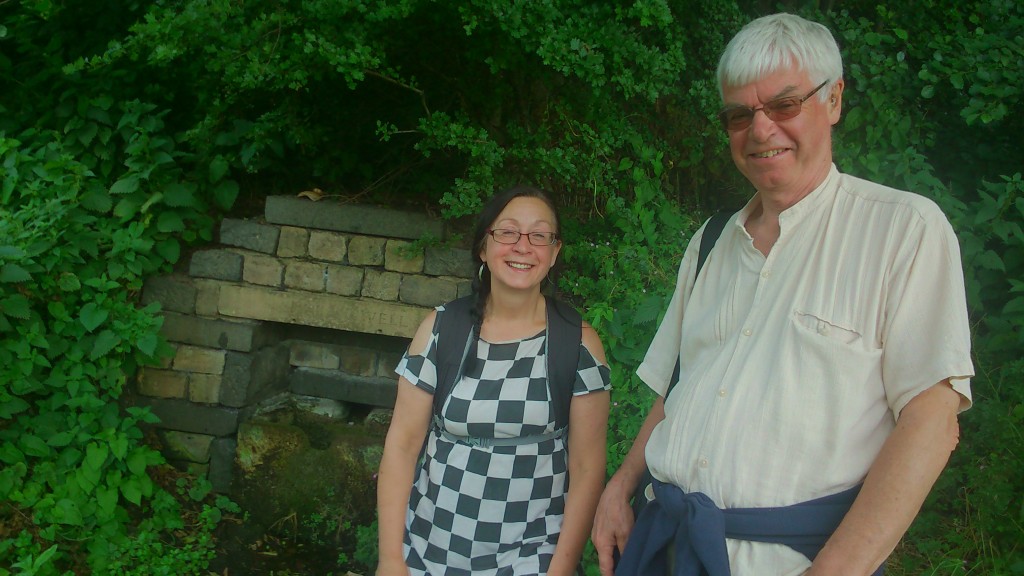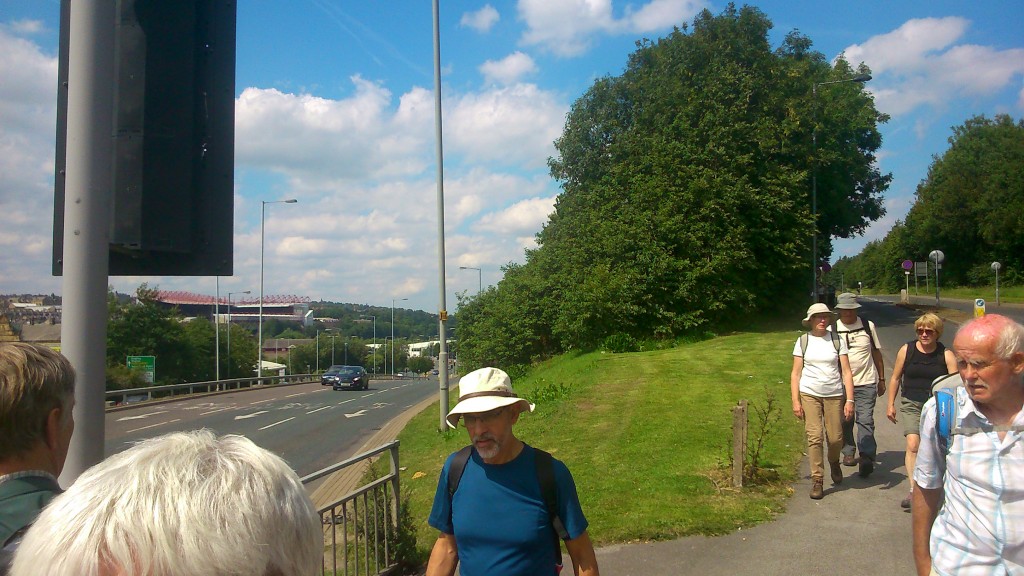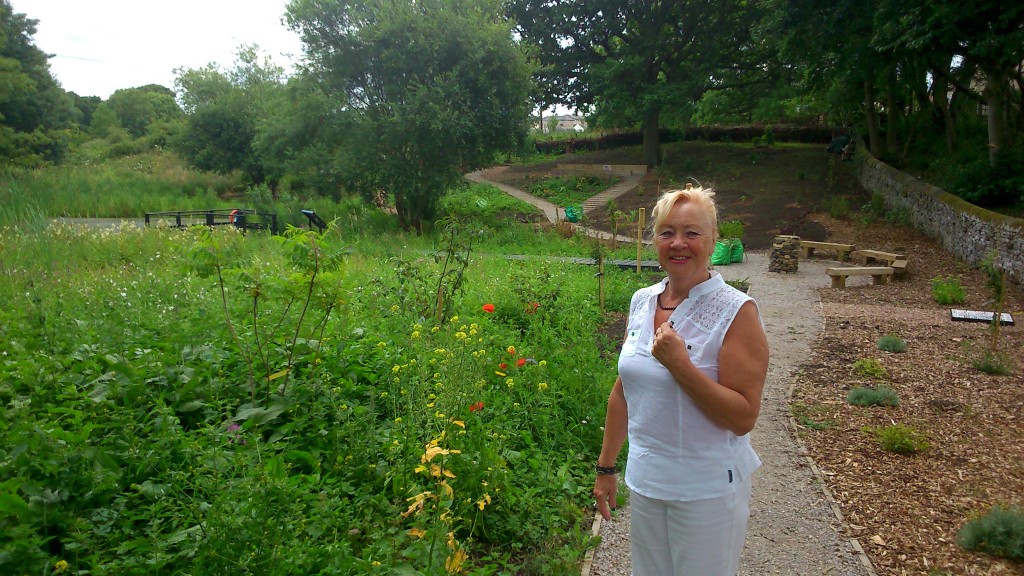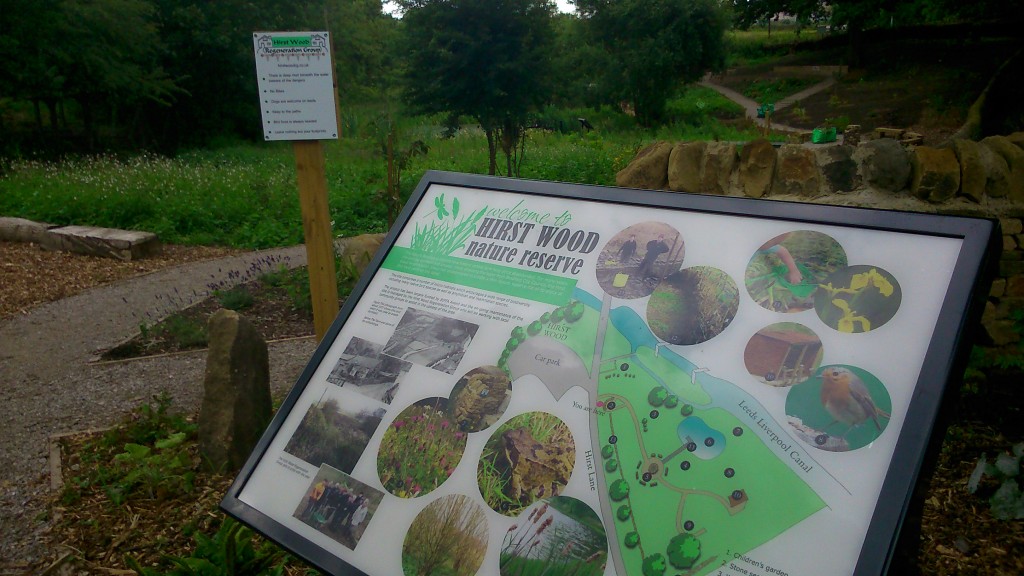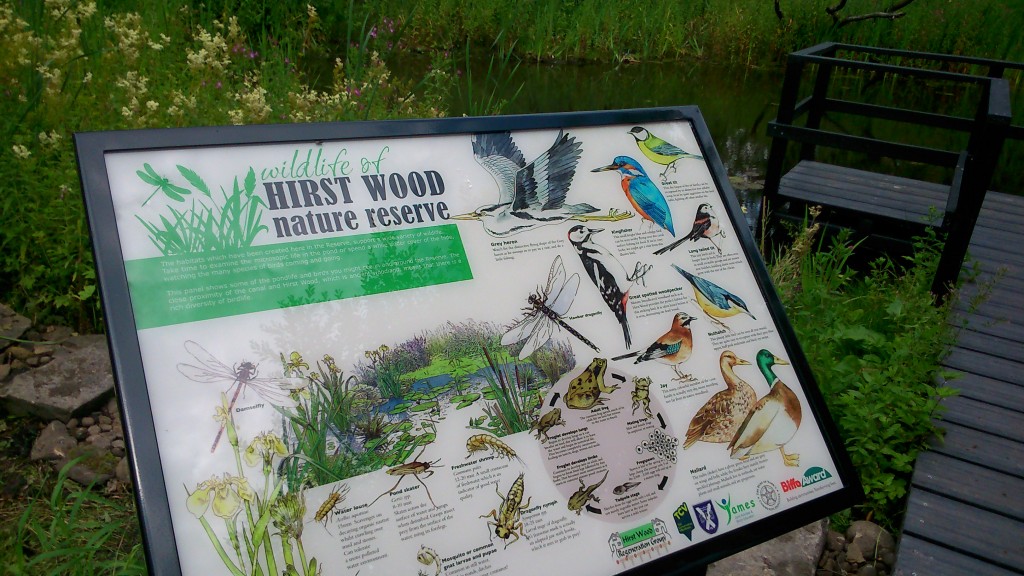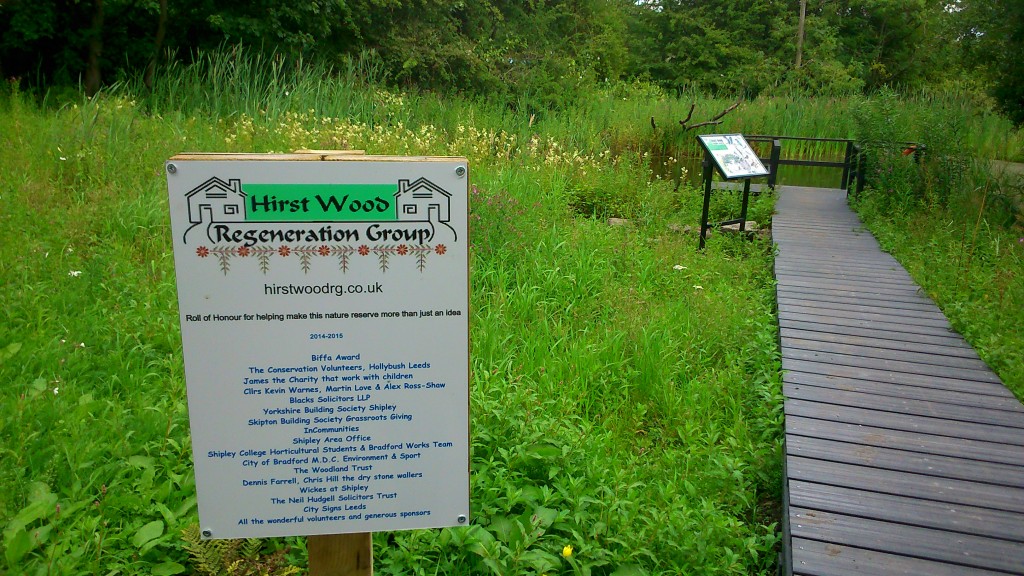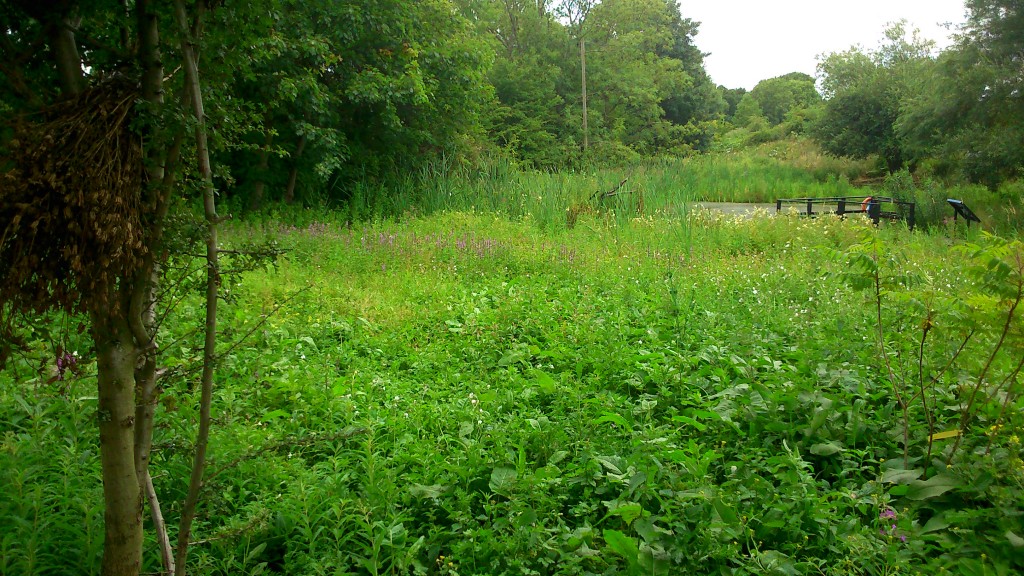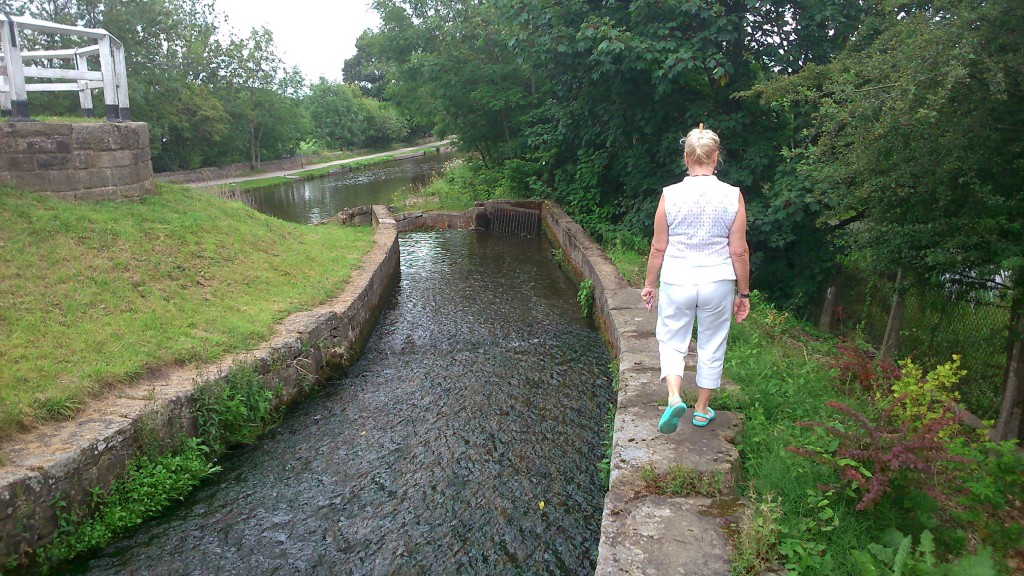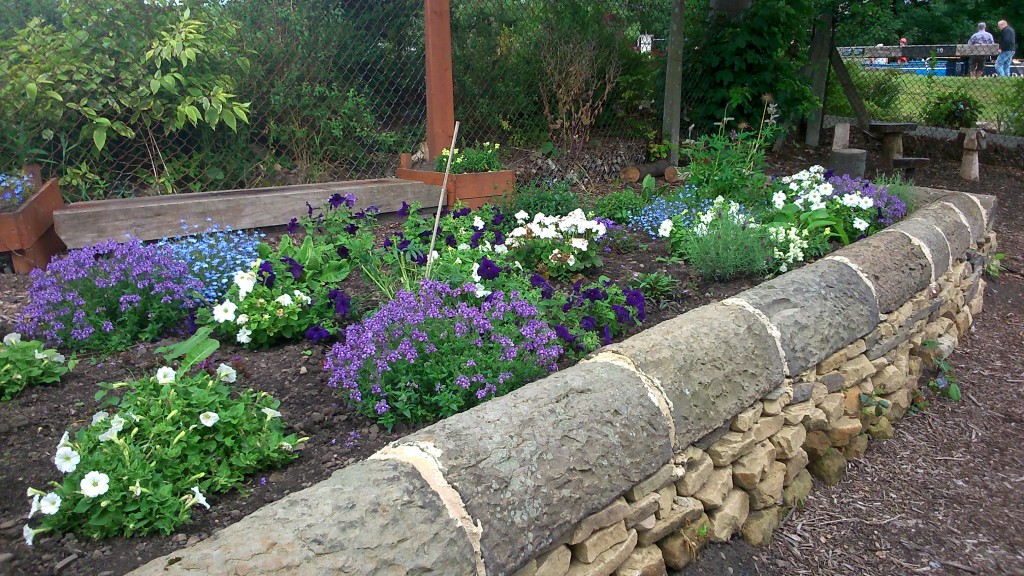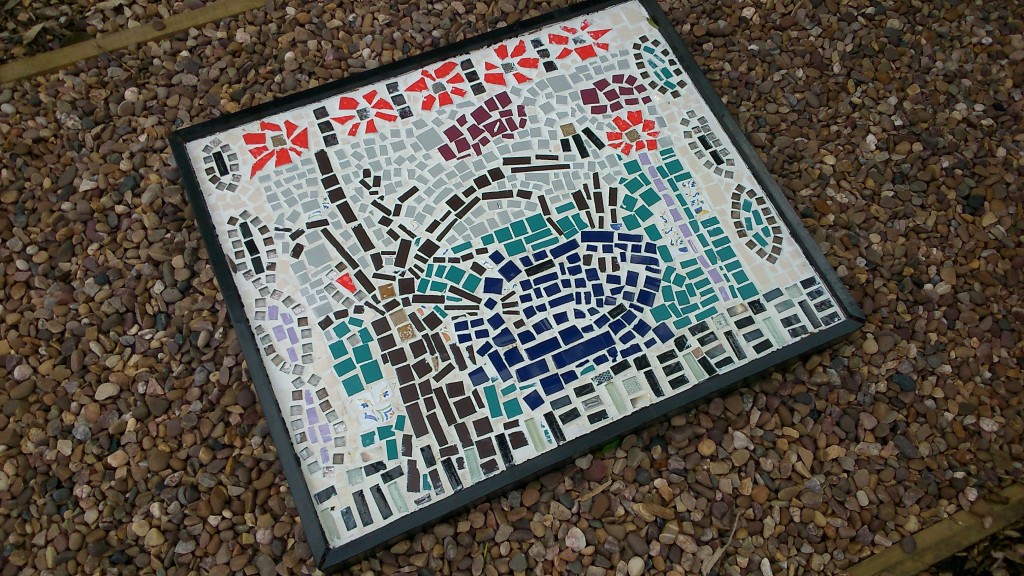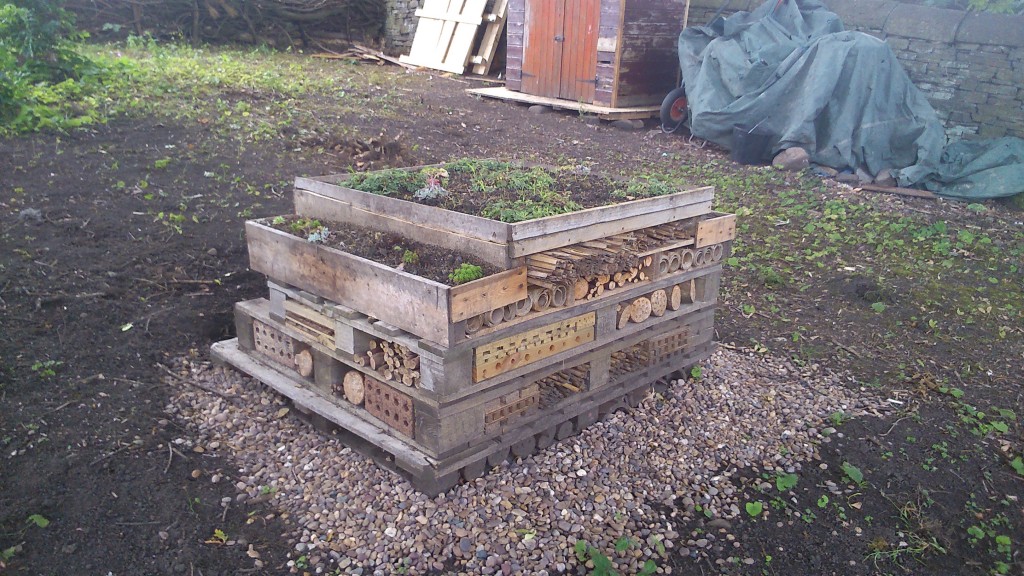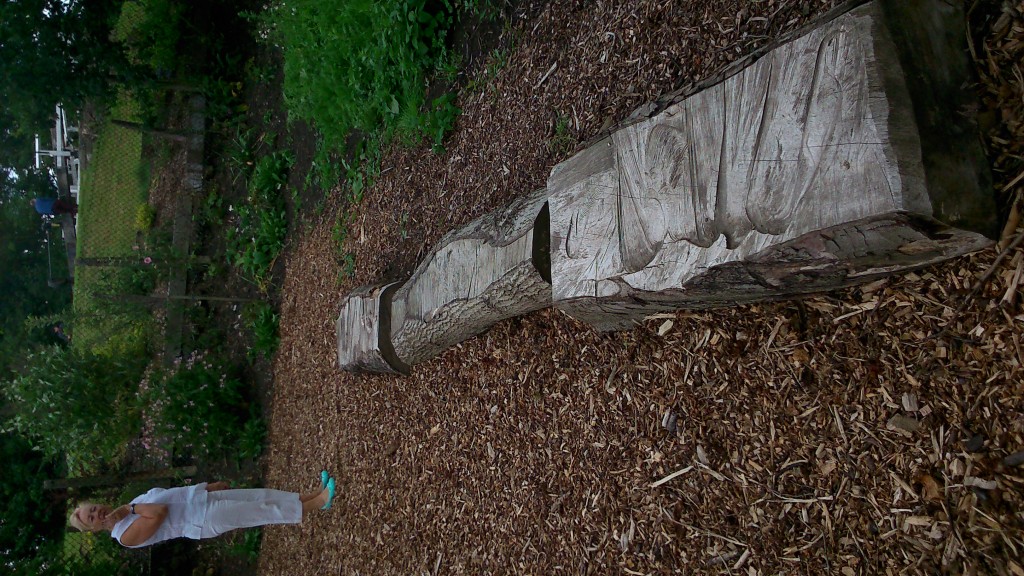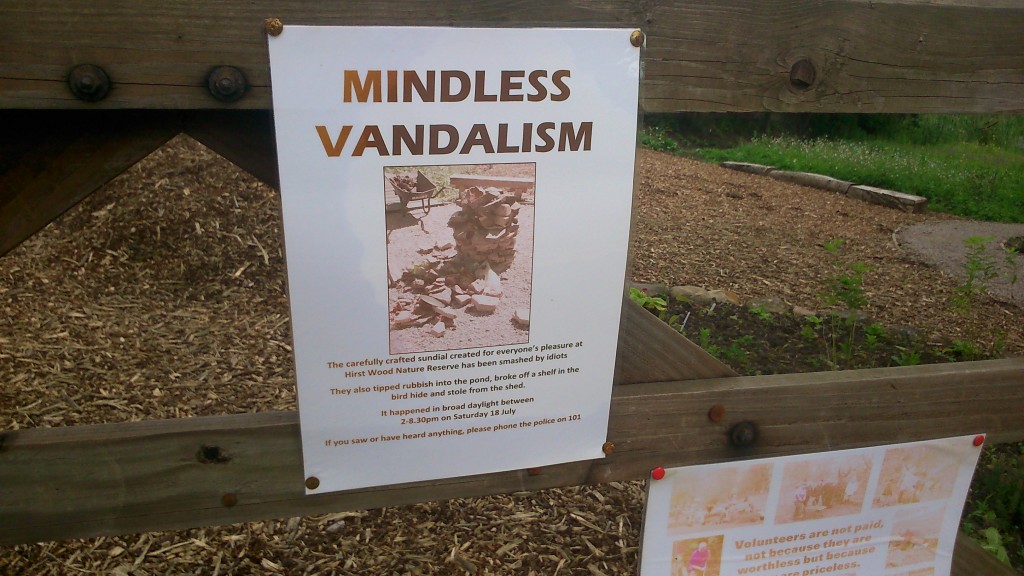In July we had an event on the grassy flood plain between the River Aire and Higher Coach Road. It involved a “meadow meander” for which we acquired a number of stake-posts to mark out the space used. Those posts this week went back into the ground, now re-purposed to carry the signs pictured above (just before they went out). They’re the work of Stewart Gledhill, of Troutbeck Avenue, who did both the carpentry and the notices/artwork. Here’s Stewart with the first of the posts, after we post-creted it into the ground, close to the start of the riverside path leading from Roberts Park…
Stewart is shortly to get that beard shaved off — he’s been growing it for sponsorship. (The jury is out on whether he looks more like Captain Birdseye or Uncle Albert from Only Fools and Horses…). Anyway, this first post — which will be mirrored by a similar one at the other end of the estate, when we get round to purchasing a couple of additional stakes — tells the story of why they’re here…
You can enlarge the picture to read the full text, but the gist of it is that Stewart is now chairing a group of estate residents who want to campaign for better use of this stretch of riverbank next to the estate. It tends to be neglected or ignored from the outside (in fact Stewart’s statement opens with a protest at the estate being “screened out” from the park…). But what if this riverside path could become a properly laid link route between the park and Hirst Wood? What if the field could become an attractive feature to walk through with, for example, wildflowers amongst the grass, and occasional river views cleared through the bankside undergrowth?
In this next notice, next to which you can glimpse a bit of the river, Stewart has included a statement about the Aire — its source and destination, and about the way that the water quality has improved over the years, a change he has observed first hand…
Most of the other notices — like this one, about riverside bird life — then draw attention to aspects of the natural world surrounding us in this area, which we so often overlook as we march past… Look closer, Stewart seems to be suggesting.
Now of course, at present, a closer look at this field doesn’t really inspire. Bradford Council, facing massive cuts, has stripped back its manpower and mower provision, and this particular area of green has been left to grow wild all summer. For a while it looked rather lovely, with buttercups and long green grasses (see this previous post), but now the field has been taken over by these rapidly spreading, browning dock plants, which make it look almost apocalyptic. Simply leaving nature to take its course isn’t necessarily a great idea if the bits of nature already present are going to go to war like this. There needs to be a plan, and some careful stewardship, if mowing really is going to be less frequent in future years.
That said, even as we were post-creting these notices in, we got chatting to passers-by (both residents on the estate and walkers-through) who were commenting on the benefits of leaving the grass to grow. For instance Peter, from Park Way, was telling me about the swirls of swallows he’s seen diving down on the field outside his window — many more than in previous years — who have been drawn by the plenitude of insects living in the grass (bird food!). With a little care from residents and other interested locals, and a little co-operation from the responsible authorities, maybe a plan can be found that gives the best of both worlds… making the field look tended, cared for and attractive, while also leaving sufficient leeway for grass and plant growth to attract the wildlife people like…
There’s a new facebook page — Higher Coach Road River Link — about this campaign. Do please visit it, and ‘Like’ it! Thanks.
To finish with, here’s an image that sums it up. A single poppy, one of the flowers that a group of residents sewed earlier in the summer as an other small gesture towards future intent… It stands alone, but it’s growing strong — a flash of colour at ground level as you walk by. And as you can see from this image, it’s also of interest to insects… who are of interest to birds… and so on. A small intervention into the great cycle of life…?

